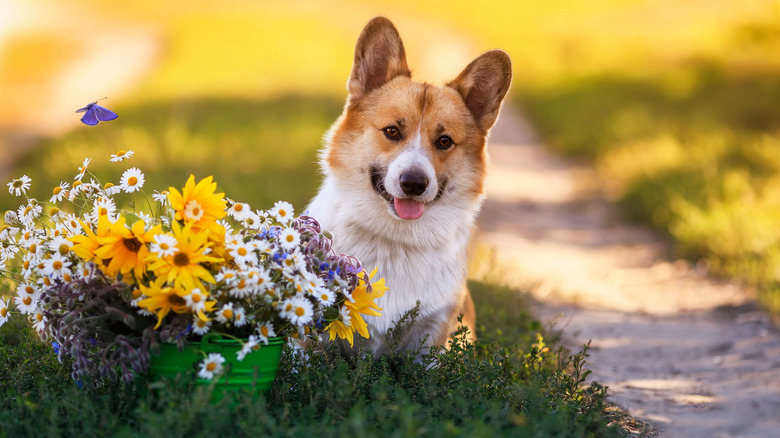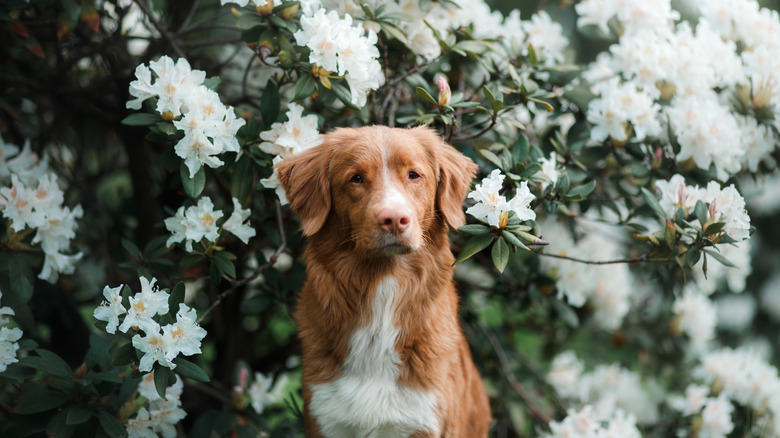It's Dangerous For Your Dog To Eat These Popular White Flowers In The Garden
A garden full of white flowers can be a haven of beauty and serenity. However, some ornamental plants can attract the attention of dogs, either because of the pup's natural curiosity or the blooms' fragrance. Although not all flowers are necessarily dangerous for your dog to eat, some of the most popular varieties, like daisies, contain toxic chemical compounds that can make them sick if ingested. These dainty florals contain sesquiterpenes, which may cause skin irritation and intestinal disorders.
Additionally, many daisies contain pyrethroids, toxic substances that are also used in insecticides and flea treatments. Toxicity level varies depending on the type of daisy and the concentration of its chemicals. Some varieties, such as the gerbera, are not toxic to pets. However, because these can look quite similar to other daisies, it is important to prevent dogs from ingesting any type of them.
Other dangerous white flowers and what to do if your dog has been poisoned
Daisies are not the only white flower to worry about. Amaryllis, a popular holiday houseplant, is toxic to dogs, as are tulips, especially the bulb. If the dog ingests tulips, it can vomiting, depression, diarrhea, and hypersalivation, per American Society for the Prevention of Cruelty to Animals. In addition, any plant in the chrysanthemum family can be considered toxic to dogs, since they can cause irritation, vomiting, diarrhea, drooling, and incoordination. Oleander is another flower that is extremely toxic to your dog, since it contains natural poisons that interfere with the electrolyte balance within the heart muscle.
Daisy poisoning occurs when a dog ingests significant amounts of these plants. Although eating one or two petals is usually not harmful, consuming large quantities of daisies can cause symptoms such as vomiting, excessive salivation, muscle spasms, and even seizures, as Wag! explains. If you discover that your dog has ingested any poisonous plant, you should remove from the area and call the vet or a pet poison control hotline for assistance. In the event that your dog is not breathing normally, a visit to the nearest emergency veterinary clinic is in order.
Looking for safer blooms for your garden? Consider planting flowers that won't harm your dog instead.

